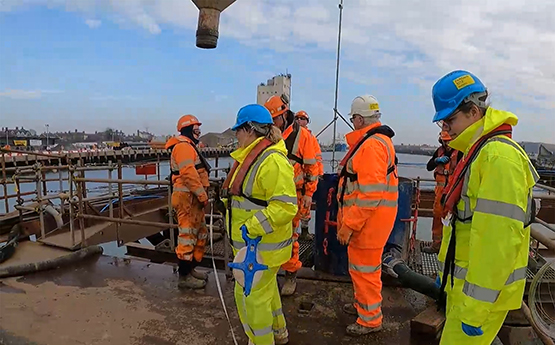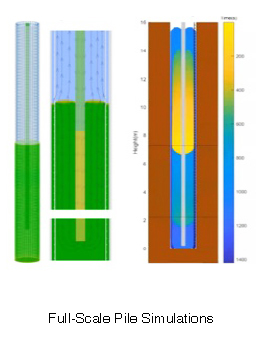Project Overview
Defects such as mattressing, inclusions, blockage and bleed caused by insufficient concrete flow or sub-par concrete quality within deep foundation constructions lead to costly delays that impact all project stakeholders. This research aims to use multiphase flow modelling to further our understanding of the mechanisms that impact concrete flow within deep foundations like piles and diaphragm walls in order to offer guidance to reduce their occurrence.
Project Aims:
Full-scale parametric study
- How do factors such as concrete workability, rebar spacing, cover zone size, tremie embedment, support fluid properties etc. impact the flow of concrete within deep foundations?
- How can we interpret these results and link them to defects that are found to occur in industry?
- Further our understanding of flow mechanisms within deep foundations - do current standards/codes need to be adjusted to reduce this occurrence of these defects?
Investigating numerical methods for concrete flow
- Pure CFD is able to capture the bulk-flow behavior of tremie concrete, but other numerical methods such as CFD-DEM may be required to capture certain flow mechanisms such as blockage
Best practices for simulating concrete flow
- How to set up simulations for concrete flow (OpenFOAM / Ansys)
- Typical pitfalls etc.
Period:
Oct 2020 – Oct 2024
Impact
This research project is in conjunction with industry partners Arup, and our research team is part of the European Federation of Foundation Contractors (EFFC) and Deep Foundations Institute in the United States (DFI) concrete task group – which is composed of over 30 multinational industry leaders in the EU and US, working in collaboration to solve issues within the piling industry regarding concrete flow and support fluids in deep foundation construction. “A joint review of problems in bored piles and diaphragm walls cast using tremie methods by both the EFFC and the DFI identified that a factor in a significant number of cases was the use of concrete mixes with inadequate workability, or insufficient stability or robustness.” – EFFC/DFI Tremie Concrete Guide. This combination of lack of concrete workability alongside other factors such as rebar spacing, cover zone size, tremie embedment and pour time can have a dramatic impact on the concrete flow within the pile, and therefore the quality of the final structure. Furthering our understanding of the mechanisms that lead to issues regarding fresh concrete flow will allow for current best practices to be adapted, reducing the frequency of defects occurring.
Collaborators
Arup, European Federation of Foundation Contractors (EFFC), Deep Foundations Institute (DFI)




